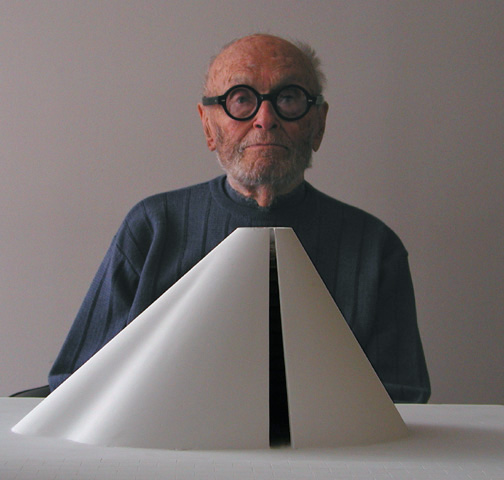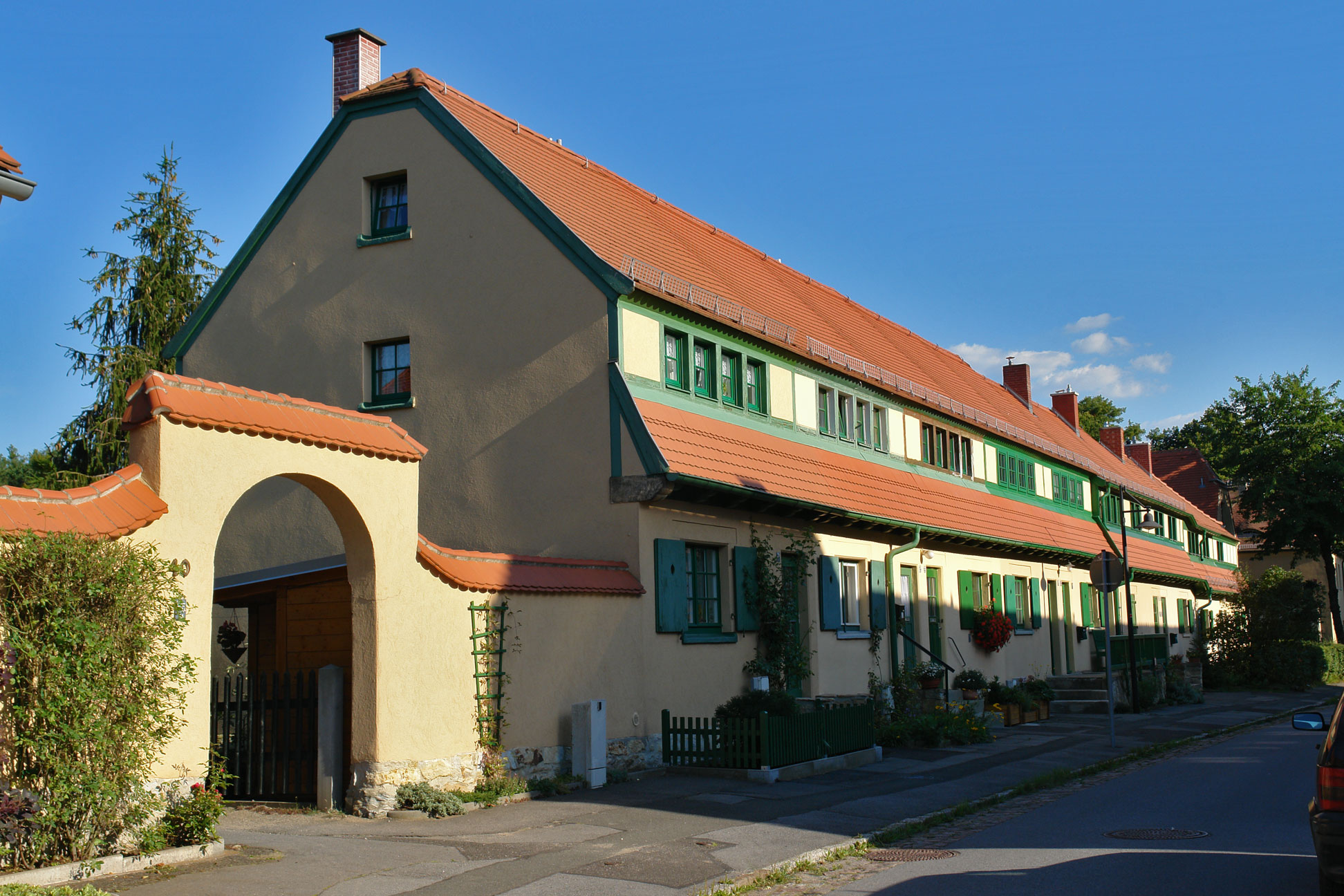|
Alfred Toepfer Foundation
The Alfred Toepfer Stiftung F.V.S. is a German foundation established in 1931 by the Hamburg merchant Alfred Toepfer. The foundation is committed to promoting European unification and ensuring cultural diversity and understanding between the countries of Europe. History The rich industrialist Alfred Toepfer is considered, by the contemporary historiographic criticism, a controversial figure; philanthropist and lover of the arts, he had a significant role in the culture, politics and economic environment of Nazi Germany from the 30s until the end of the Second World War. The activity of Toepfer in between the two World Wars, is well documented by a massive cultural promotion of the ideas of ''common ethics and identity'', obviously symbiotic with Nazi ideology. Toepfer however, after the war, denied any kind of Nazi involvement completely and categorically. The substantial abdication of his politic and ideologic past, is recognised by critics nowadays in the important range of ... [...More Info...] [...Related Items...] OR: [Wikipedia] [Google] [Baidu] |
Hamburg
(male), (female) en, Hamburger(s), Hamburgian(s) , timezone1 = Central (CET) , utc_offset1 = +1 , timezone1_DST = Central (CEST) , utc_offset1_DST = +2 , postal_code_type = Postal code(s) , postal_code = 20001–21149, 22001–22769 , area_code_type = Area code(s) , area_code = 040 , registration_plate = , blank_name_sec1 = GRP (nominal) , blank_info_sec1 = €123 billion (2019) , blank1_name_sec1 = GRP per capita , blank1_info_sec1 = €67,000 (2019) , blank1_name_sec2 = HDI (2018) , blank1_info_sec2 = 0.976 · 1st of 16 , iso_code = DE-HH , blank_name_sec2 = NUTS Region , blank_info_sec2 = DE6 , website = , footnotes ... [...More Info...] [...Related Items...] OR: [Wikipedia] [Google] [Baidu] |
Heinrich Tessenow Medal
The Heinrich Tessenow Gold Medal (Heinrich-Tessenow-Medaille) is an architecture award established in 1963 by the Alfred Toepfer Stiftung F.V.S. of Hamburg in honour of Heinrich Tessenow. It is awarded by the Heinrich-Tessenow-Gesellschaft e.V. "to honour people who have achieved distinction in craft and industrial form-making and in the teaching of the culture of living and building, and who have through their life's work acted in the spirit of Heinrich Tessenow". retrieved 29 December 2011 Until 2006, the medal was awarded annually. Winners * 1963: |
KAIROS Prize
The KAIROS Prize has been awarded to European artists and scholars from the fields of visual and performing arts, music, architecture, design, film, photography, literature and journalism since 2007 by the Alfred Toepfer Foundation in Hamburg. It is endowed with a sum of 75,000 Euro. Winners Source: *2007: Albrecht Dümling, German musicologist *2008: Tímea Junghaus, Hungarian art historian *2009: Sidi Larbi Cherkaoui, Belgian choreographer *2010: Andri Snær Magnason, Icelandic writer *2011: Şermin Langhoff, Turkish-German theatre director *2012: Katell Gélébart, French fashion designer *2013: Paweł Althamer, Polish sculptor and video artist *2014: Jasmila Žbanić, Bosnian film director *2015: Eike Roswag, German architect *2016: Teodor Currentzis, Greek-Russian conductor and musician *2017: Inci Bürhaniye and Selma Wels *2018: Jan Gerchow *2019: Nihad Kreševljaković, Bosnian historian and director *2020: Agnes Meyer-Brandis See also * List of European art awards ... [...More Info...] [...Related Items...] OR: [Wikipedia] [Google] [Baidu] |
Peter Zumthor
Peter Zumthor (; born 26 April 1943) is a Swiss architect whose work is frequently described as uncompromising and minimalist. Though managing a relatively small firm, he is the winner of the 2009 Pritzker Prize and 2013 RIBA Royal Gold Medal. Early life Zumthor was born in Basel, Switzerland. His father was a cabinet-maker, which exposed him to design from an early age and led him to become an apprentice for a carpenter later in 1958. He studied at the Kunstgewerbeschule (arts and crafts school) in his native city starting in 1963. In 1966, Zumthor studied industrial design and architecture as an exchange student at Pratt Institute in New York. In 1968, he became conservationist architect for the Department for the Preservation of Monuments of the canton of Graubünden. This work on historic restoration projects gave him a further understanding of construction and the qualities of different rustic building materials. As his practice developed, Zumthor was able to incorporate h ... [...More Info...] [...Related Items...] OR: [Wikipedia] [Google] [Baidu] |
Sverre Fehn
Sverre Fehn (14 August 1924 – 23 February 2009) was a Norwegian architect. Life Fehn was born at Kongsberg in Buskerud, Norway. He was the son of John Tryggve Fehn (1894–1981) and Sigrid Johnsen (1895–1985). He received his architectural education at the Oslo School of Architecture and Design in Oslo. He entered his course of study in 1946 and graduated during 1949. Among other instructors, he studied under Arne Korsmo (1900–1968).Grimes, William: ''Sverre Fehn, 84, Architect of Modern Nordic Forms, Dies'' in , February 27, 2009 In 1949, Fehn and architect [...More Info...] [...Related Items...] OR: [Wikipedia] [Google] [Baidu] |
Pritzker Prize
The Pritzker Architecture Prize is an international architecture award presented annually "to honor a living architect or architects whose built work demonstrates a combination of those qualities of talent, vision and commitment, which has produced consistent and significant contributions to humanity and the built environment through the art of architecture.” Founded in 1979 by Jay A. Pritzker and his wife Cindy, the award is funded by the Pritzker family and sponsored by the Hyatt Foundation. It is considered to be one of the world's premier architecture prizes, and is often referred to as the Nobel Prize of architecture. The Pritzker Architecture Prize is said to be awarded "irrespective of nationality, race, creed, or ideology". The recipients receive US$100,000, a citation certificate, and, since 1987, a bronze medallion. The designs on the medal are inspired by the work of architect Louis Sullivan, while the Latin inspired inscription on the reverse of the medallion—''f ... [...More Info...] [...Related Items...] OR: [Wikipedia] [Google] [Baidu] |
Eduardo Souto De Moura
Eduardo Elísio Machado Souto de Moura (; born 25 July 1952), better known as Eduardo Souto de Moura, is a Portuguese architect who was the recipient of the Pritzker Architecture Prize in 2011 and the Wolf Prize in Arts in 2013. Along with Fernando Távora and Álvaro Siza, he is one of the alumni of the Porto School of Architecture, where he was appointed a Professor. Life and career Family Souto de Moura is the son of medical doctor José Alberto Souto de Moura and wife Maria Teresa Ramos Machado. His brother is José Souto de Moura, former 9th Attorney-General of Portugal. Education Souto de Moura was born in Porto, and studied sculptureKate Taylor (28 March 2011)Architect From Portugal Wins Pritzker''New York Times''. before switching to architecture at the School of Fine Arts of the University of Porto, the current FAUP – Faculdade de Arquitectura da Universidade do Porto, and receiving his degree in 1980. From 1974 to 1979 he worked with Álvaro Siza Vieira at his a ... [...More Info...] [...Related Items...] OR: [Wikipedia] [Google] [Baidu] |
David Chipperfield
Sir David Alan Chipperfield, (born 18 December 1953) is an English architect. He established David Chipperfield Architects in 1985. His major works include the River and Rowing Museum in Henley-on-Thames, Oxfordshire (1989–1998); the Museum of Modern Literature in Marbach, Germany; the Des Moines Public Library, Iowa (2002–2006); the Neues Museum, Berlin (1997–2009); The Hepworth Wakefield gallery in Wakefield, UK (2003–2011), the Saint Louis Art Museum, Missouri (2005–2013); and the Museo Jumex in Mexico City (2009–2013). Rowan Moore, the architecture critic of ''The Guardian'' of London, described his work as "serious, solid, not flamboyant or radical, but comfortable with the history and culture of its setting". "He deals in dignity, in gravitas, in memory and in art." David Chipperfield Architects is a global architectural practice with offices in London, Berlin, Milan, and Shanghai. Career Chipperfield was born in London in 1953, and graduated in 1976 from ... [...More Info...] [...Related Items...] OR: [Wikipedia] [Google] [Baidu] |
Juan Navarro Baldeweg
Juan Navarro Baldeweg (11 June 1939, Santander) is a Spanish architect and professor at the Superior Technical School of Architecture of Madrid (ETSAM). He is currently retired from architectural practice. Baldeweg studied at the San Fernando School of Fine Arts of Madrid, and the School of Architecture of the Technical University of Madrid, where he graduated in 1965. From 1977 to 2014 (year when he retired) he was appointed as teacher of the ETSAM, though for more than 20 years he was hardly ever seen in the school. Throughout his career Baldeweg won numerous architectural design competitions, including for the Castilla y León Convention Center in Salamanca (1985), Olympic Village Training Pavilion in Barcelona (1988), Congress and Convention Center of Cádiz (1988), Ministry Buildings for the Regional Government of Extremadura in Mérida (1989), Congress Center of Salzburg (1992), Museum for the Salvador Allende Collection in Santiago de Chile (1993), Bibliotheca Hertzia ... [...More Info...] [...Related Items...] OR: [Wikipedia] [Google] [Baidu] |
Giorgio Grassi
Giorgio Grassi (born 1935) is one of Italy's most important modern architects, and part of the so-called Italian rationalist school, also known as ''La Tendenza'', associated most famously with Carlo Aymonino and Aldo Rossi that emerged in Italy in the 1960s. Much influenced by Ludwig Hilberseimer, Heinrich Tessenow and Adolf Loos, Grassi's architecture is the most severely rational of the group: his extremely formal work is predicated on absolute simplicity, clarity, and honesty without ingratiation, rhetoric, or spectacular shape-making; it refers to historical archetypes of form and space and has a strong concern with the making of urban space. For these reasons Grassi is a non-conformist and a critic of conventional mainstream architecture. Career Grassi was born in Milan, Italy. He studied architecture at the Politecnico di Milano university, where he graduated in 1960. He worked for the magazine '' Casabella-continuità'' for 3 years until 1964 and has been professor at ... [...More Info...] [...Related Items...] OR: [Wikipedia] [Google] [Baidu] |
Heinrich Tessenow
Heinrich Tessenow (7 April 1876 – 1 November 1950) was a German architect, professor, and urban planner active in the Weimar era. Biography Tessenow is considered together with Hans Poelzig, Bruno Taut, Peter Behrens, Fritz Höger, Ernst May, Erich Mendelsohn, Walter Gropius and Mies van der Rohe as one of the most important personalities of the architectural German ''panorama'' during the time of the Weimar Republic. He was born in Rostock, Mecklenburg-Schwerin. His father was a carpenter, and he studied as an apprentice before studying architecture in a building trade school in Leipzig and at the Technical University of Munich, where he later taught. Tessenow and fellow architects Hermann Muthesius and Richard Riemerschmid are credited with the 1908 Gartenstadt Hellerau, near Dresden, a housing project that was the first tangible result of the influence of the English garden city movement in Germany. This particular strain of humane, functionalist urban planning would ... [...More Info...] [...Related Items...] OR: [Wikipedia] [Google] [Baidu] |




_03.jpg)

